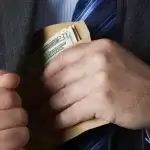 It should come as no surprise that cash is the most popular target of fraud perpetrators. After all, once stolen, cash itself is virtually untraceable. But that doesn’t mean forensic accounting professionals can’t unearth cash fraud schemes — and the crooks behind them.
It should come as no surprise that cash is the most popular target of fraud perpetrators. After all, once stolen, cash itself is virtually untraceable. But that doesn’t mean forensic accounting professionals can’t unearth cash fraud schemes — and the crooks behind them.
3 categories
According to the Association of Certified Fraud Examiners, there are three main categories of cash fraud (which includes checks because they’re easily converted to cash):
- Theft of cash on hand,
- Theft of cash receipts, and
- Fraudulent disbursements.
The last category comprises many of the most frequently executed schemes, such as overbilling and “ghost” vendor or employee schemes. For example, overbilling vendors usually submit inflated invoices by overstating the price per unit or the quantity delivered. A dishonest vendor also might submit a legitimate invoice multiple times. Overbilling may involve collusion with employees of the victim organization, who typically receive kickbacks for their assistance.
Employees also can conduct billing fraud on their own, submitting bogus invoices payable to a fictitious vendor and diverting the payments to themselves. Similarly, an employee might set up payroll disbursements to nonexistent ghost employees.
Tracing schemes
Cash can be difficult to trace once it’s in the hands of a thief. But forensic experts usually are able to trace the path that stolen cash took before the fraudster pocketed it. This includes who “touched” the cash and what prompted its flow out of the organization.
Inflated invoices, for example, often leave a trail of red flags. Experts look for invoices that bill for “extra” or “special” charges with no explanation. Other suspicious signs include round dollar amounts, or amounts just below the threshold that requires management’s signoff, and discrepancies between invoice amounts and purchase orders, contracts or inventory counts.
If forensic experts suspect that fictitious billing has occurred, they often investigate accounts with no tangible deliverables — such as those for consulting, commissions and advertising — and check vendor addresses against employee addresses. Invoices with consecutive numbers or payable to post office boxes receive extra scrutiny.
Returned checks can supply useful information, too. Fraud perpetrators are more likely to cash checks, whereas legitimate businesses typically deposit them and rarely endorse checks to third parties.
To trace ghost employee schemes, experts examine payroll lists, withholding forms, employment applications, personnel files and other documents. The information collected from these sources may provide vital links between actual and ghost employees that wouldn’t otherwise be apparent.
To catch a thief
Strong internal controls are instrumental in preventing cash-type schemes. But even the strongest controls sometimes fail to prevent a determined fraudster. If that happens, we can help your business ferret out the fraud and track down the perp.
© 2019

lanasa@hwco.com




